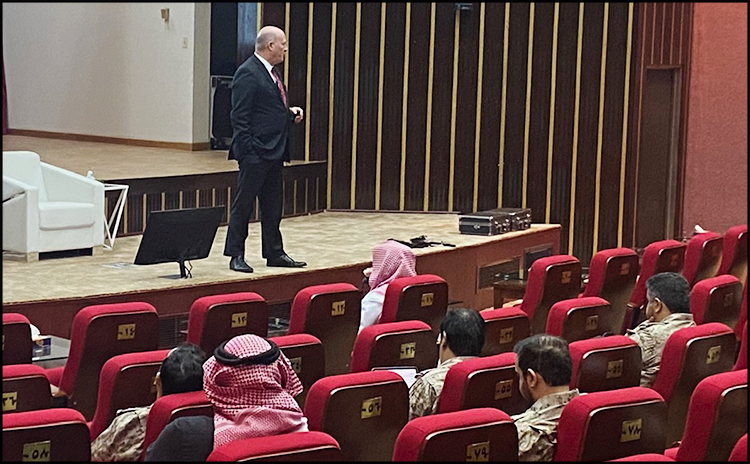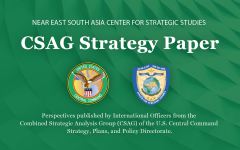SANDU Military Strategy Course
February 14, 2024 2024-02-14 10:31SANDU Military Strategy Course
SANDU Military Strategy Course
From 28 January–2 February 2024, Near East South Asia (NESA) Center for Strategic Studies Professors Mark Bibbey and David Des Roches, supported by Matthew Holbert, NESA Program Manager, and Thomas Wagstaff, Academic Advisor, delivered the one-week Saudi War Course Strategy Module, to support the Saudi Armed Forces Command and Staff College in Riyadh, Saudi Arabia.

A mix of sixty War College faculty and students received the course on Military Strategy, conducted in English with simultaneous translation into Arabic for students who required this. The program consisted of theoretical modules and case studies on military strategy, assisting the participants to conceptualize and apply theoretical concepts of strategy to real-world problems. The content centered on Fundamentals of Strategy, Strategic Principles, Developments of Strategy, Grand Strategy, and the Strategic Concepts of the USA, Iran, and Israel applied to the current global security situation.
Lectures were presented and then followed by student engagement to explore and address underlying questions, with a focus on the strategic principles of strategy provided in the case studies. Students thoughtfully responded with answers that indicated that they understood the basics of strategy and the elements of national power, while appreciating the challenges in integrating the elements of power together in a coherent strategy to achieve national aims. Furthermore, the general tone of the questions indicated that the students recognize the challenges associated with unity of command in complex organizations and in developing and implementing national strategy and grand strategy.
The SANDU Military Strategy Course is a program with excellent learning outcomes achieved. The NESA Center looks forward to further extending its educational support to senior officers within the Kingdom of Saudi Arabia.







